Samsung: Galaxy Fold Is Tested to Fold/Unfold 200,000 Times
by Anton Shilov on March 28, 2019 4:10 PM EST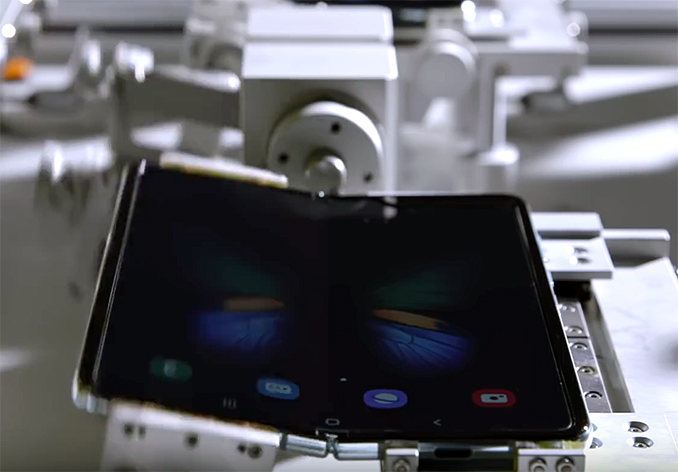
Foldable smartphones are still to prove their value proposition in the market, and we will see if they become popular among end users. It goes without saying that foldable handsets represent a technological challenge in the unique way smartphones are used. Samsung, through a released video, has stated that its Galaxy Fold device is not only impressive in terms of technology, but is also reliable enough to be folded and unfolded for over 100 times a day for five years. The company even published a video showing how it tests the handset for reliability.
Galaxy Fold, Unfold, Fold, Unfold, Fold, Unfold, Fold, Unfold, Fold
There are several challenges that companies like Samsung face when developing foldable smartphones. Firstly, they required a 0 – 180º fully inward (or outward) foldable AMOLED display. Secondly, they needed to develop a lightweight and durable hinge. Thirdly, they had to build internal electronics/cabling in such a way that they would survive thousands of fold/unfold cycles. Fourthly, they needed to design software/firmware to enable owners to use foldable handsets efficiently (e.g., switch from cover displays to main ones, tailor Android apps for larger screens, etc.).
When it comes to foldable hardware, reliability is a must. Samsung states that smartphones are used for ~100 times a day on average, so the AMOLED displays (as well as hinges) have to survive years of active usage without harming color reproduction or rigidity. If one folds and unfolds their phone for ~100 times a day, then the number of fold/unfold cycles the handset will have to survive will total 182,500 in five years (100*365*5). Since people may use it slightly differently, Samsung tests its Galaxy Fold smartphones for 200,000 folds and unfolds, just to make sure, the company said. In fact, the manufacturer has even built a robot that can perform such tests and demonstrated its work on a new video.
One thing to note about the number of fold/unfold cycles that smartphones have to survive is the actual use case - depending on how often users will actually open up the device. With a screen on the outside, one might argue that Samsung devices will not be unfolded as often as say, the Huawei version. But the new form factor may indicate new use cases that current smartphoens are not being used for. Therefore, a $1980/€2000£1799 question is whether foldable smartphones will survive a new use model.
Ian: It's worth pointing out that it should be obvious the reasons why and how Samsung (and Huawei, and others) test the folding repetative act on their devices. All smartphone manufacturers do physical testing of their devices the same way, and at scale - if there's a button, it gets pushed 100k-500k times. If there's a headphone jack, one gets put in 100k-500k times. If there's a fingerprint sensor, it gets tested 100k-500k times. If it has a drop rating, it gets tested for being dropped. Pretty much everyone does the testing how you would expect - I've seen several testing labs as a reviewer and they really all look pretty much the same. Most companies will test a certain number of devices every batch to ensure compliance with their own internal testing; what will differ between the companies is what they define as 'acceptable use', and how that ties in to the warranty. The key thing here is that not every device is tested up to the 200k - just a select from from each batch. It is likely that those coming off the line might be tested a few times (100-500) just to remove any potential 'early failures' that can occur, so devices are not dead on arrival.
Related Reading:
- Samsung Galaxy Fold Set to Be Available in UK on April 26: £1799
- Samsung Announces The Galaxy Fold: The First Folding Display Smartphone
- Samsung Galaxy S10 5G: Launch Date & Approximate Price Revealed
Source: Samsung


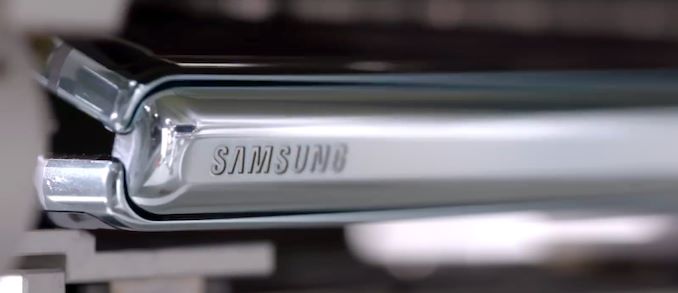
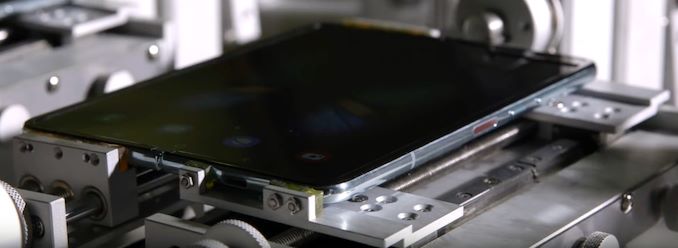
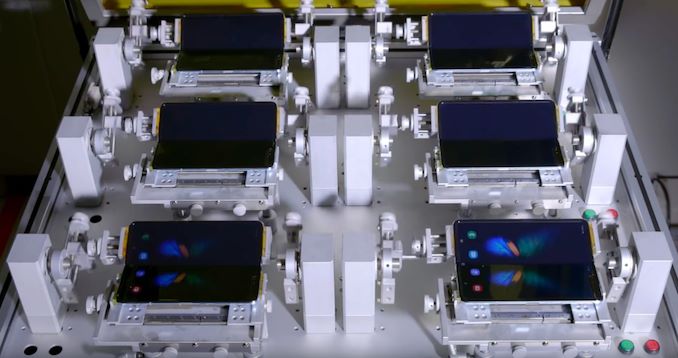
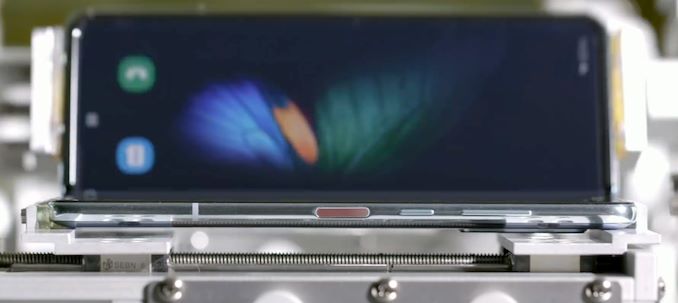








18 Comments
View All Comments
FunBunny2 - Thursday, March 28, 2019 - link
there is one problem. in materials engineering/testing there are two factors: number of movements and simple ageing. IOW, 200,000 folds done continuously, or thereabouts, isn't the same as that number of folds with materials' ageing in addition.mode_13h - Thursday, March 28, 2019 - link
The real test will be to put it in the hands of a toddler.FunBunny2 - Thursday, March 28, 2019 - link
what kind of knucklehead adult would put his/her $2,000 toy within reach of a toddler??? oh... yeah, your average 1%-er.FWIW, some years ago I found a 'folding' screen patent. notably, the schematic included didn't show the screen as folding ala a piece of paper as this appears to, but rather with a distinct radius hidden inside the case. may haps that will work better.
s.yu - Monday, April 1, 2019 - link
There's a radius for all current foldable designs, and FYI Samsung's has the tighter curve.Mikewind Dale - Thursday, March 28, 2019 - link
No one will put their $2,000 phone in the hands of their toddler. They'll lock their phone up in a safe and the toddler will still get their hands on it anyway.danielfranklin - Tuesday, April 2, 2019 - link
Confirmed.I have a two year old that will stack furniture, climb and risk life and limb, all to get to that little red icon we call YouTube...
Samus - Friday, March 29, 2019 - link
They are testing for what they can test for. 200,000 hinge actuations is pretty good for a device with a technological lifespan of ~3 years.Death666Angel - Friday, March 29, 2019 - link
And how would you test for aging in a brand new smartphone?Chances are, the materials used here have been in research for years, maybe tens of years. And along the way, they have undergone strenuous testing already and they have a lot of data points to get some extrapolation done on this thing. Not perfect, but you have to make a cost/reward analysis. It usually works out. Sometimes it doesn't (Note 7).
This sort of test is done for every modern device, where certain (mechanical) aspects get used excessively (hinges, buttons, touch screen input, wheels, brakes) in boarderline situations (high heat/humidity, extreme cold, heavy loads etc.). This accelerates the aging process for certain things and materials. But it can never 100% replace 100% of user interactions with a device in 100% of situations. That's also not the point. They only care about the 95% or the 99% or the 99.5%.
808Hilo - Sunday, March 31, 2019 - link
Temperature, x,z twist, humidity, uv dont get tested in this setup. That means the S wont reach the artificial cycles in the lab.s.yu - Monday, April 1, 2019 - link
Indeed the twisting is a serious issue.